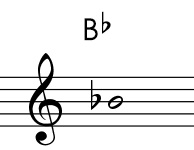
Key of C: No sharps or flats Key of G: One sharp (F#) Key of D: Two sharps (F# and C#) Key of A: Three sharps (F#, C# and G#) Key of E: Four sharps (F#, C#, G# and D#) Key of F: One flat (Bb) Key of Bb: Two flats (Bb and Eb) Key of Eb: Three flats (Bb, Eb, and Ab)Įach key also has it’s own relative minor. Here are some common key signatures and the notes they affect: Without key signatures, written music would be cluttered with sharps and flats making it very difficult to read. In other words, rather than placing a # by the note F every time it occurs in the music, it’s much easier to indicate to the musician that all Fs are to be played as F#s. The main purpose of the key signature is to limit the number of flats & sharps noted in the music. For example, if an F (natural) is to be played in the key of G, an accidental has to be placed before it so it is not played as an F#. If a note that is dictated as sharps & flats by the key signatu re is to be played as natural, an accidental is placed before the note. And all occurrences of the note F, whether on the top of the staff, the first space of the staff, or above or below the staff (marked by ledger lines), are played as an F#. In other words, if a sharp (#) is placed on the top line of the music staff, the note F is played as an F#. These are placed individually on either a line or a space of the music staff and are placed on the notes they affect.

If you look carefully at the beginning of each line of music, you will see a group of sharps or flats (they are never used at the same time).

This is written immediately after the clef (on the staff) and is represented by a number of sharps (#) and flats (b). What Do All Those Flats & Sharps At The Beginning Of A Piece of Sheet Music Mean?Įach piece of music contains a key signature.


 0 kommentar(er)
0 kommentar(er)
